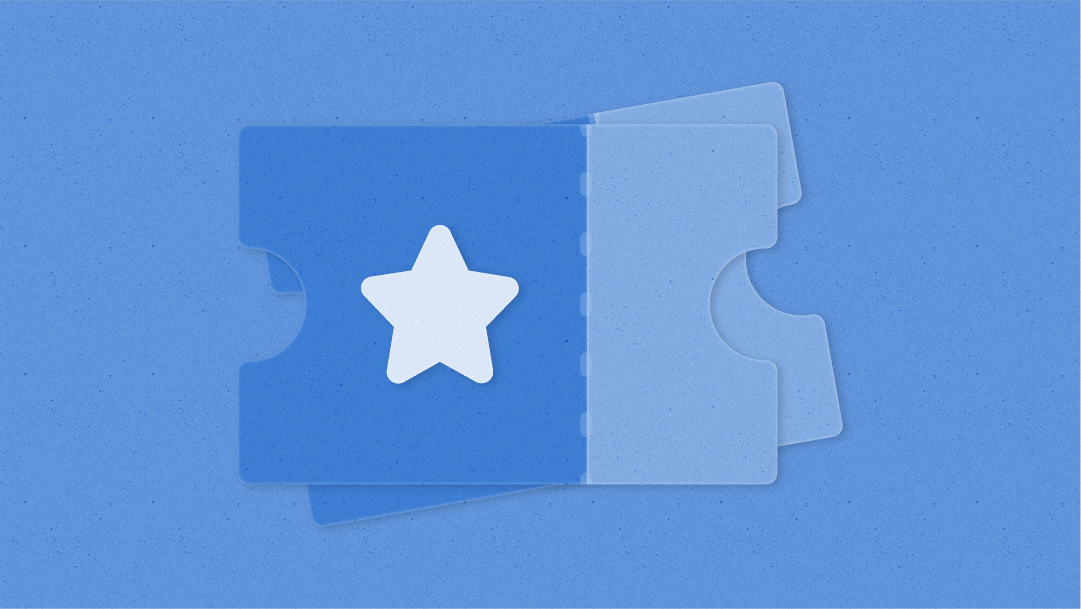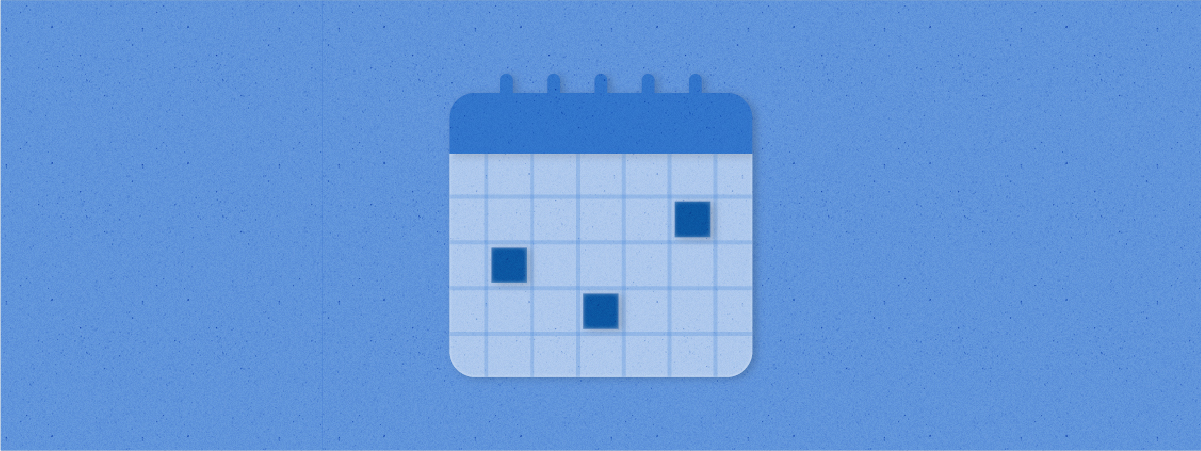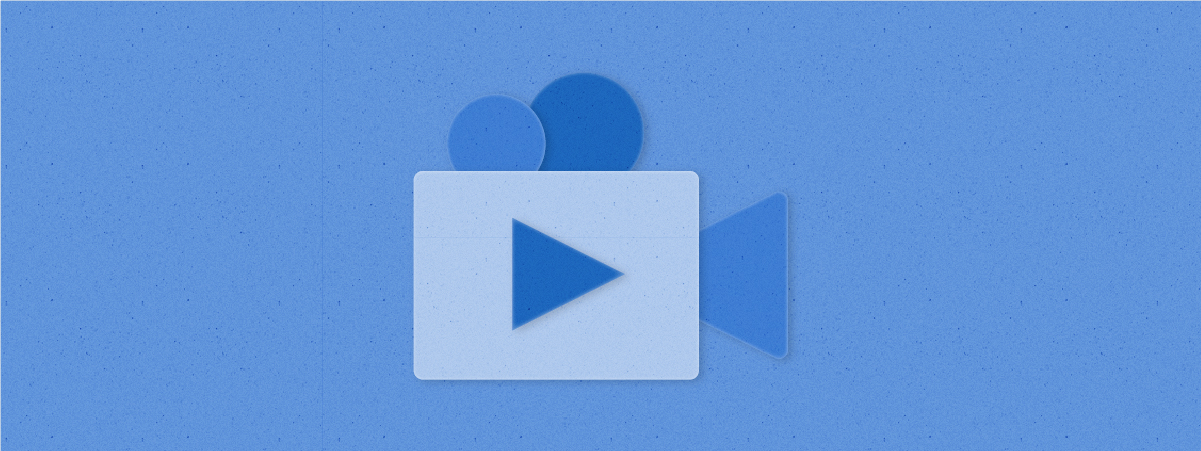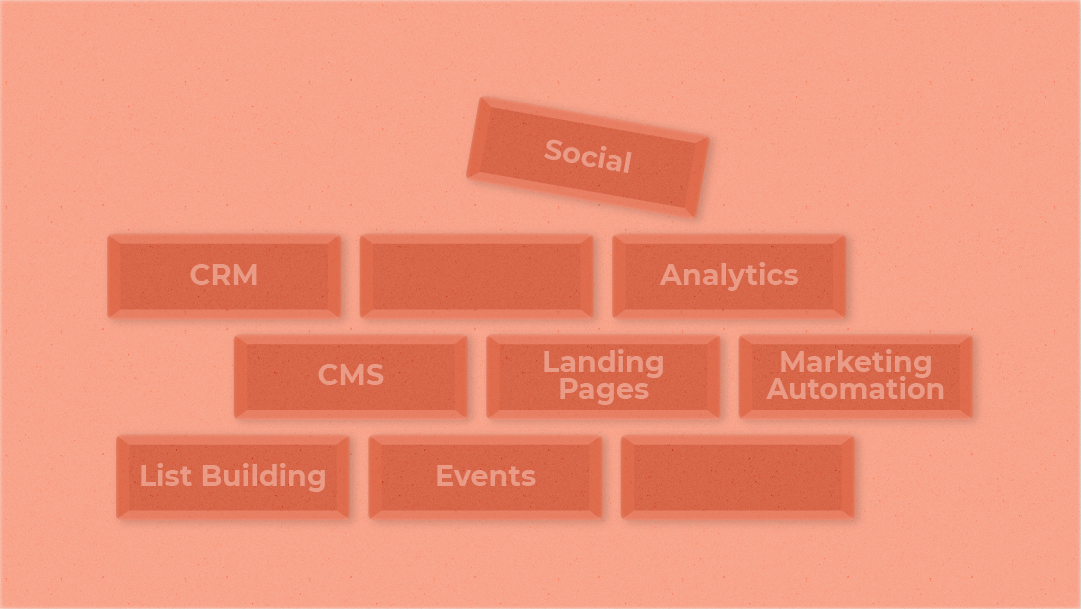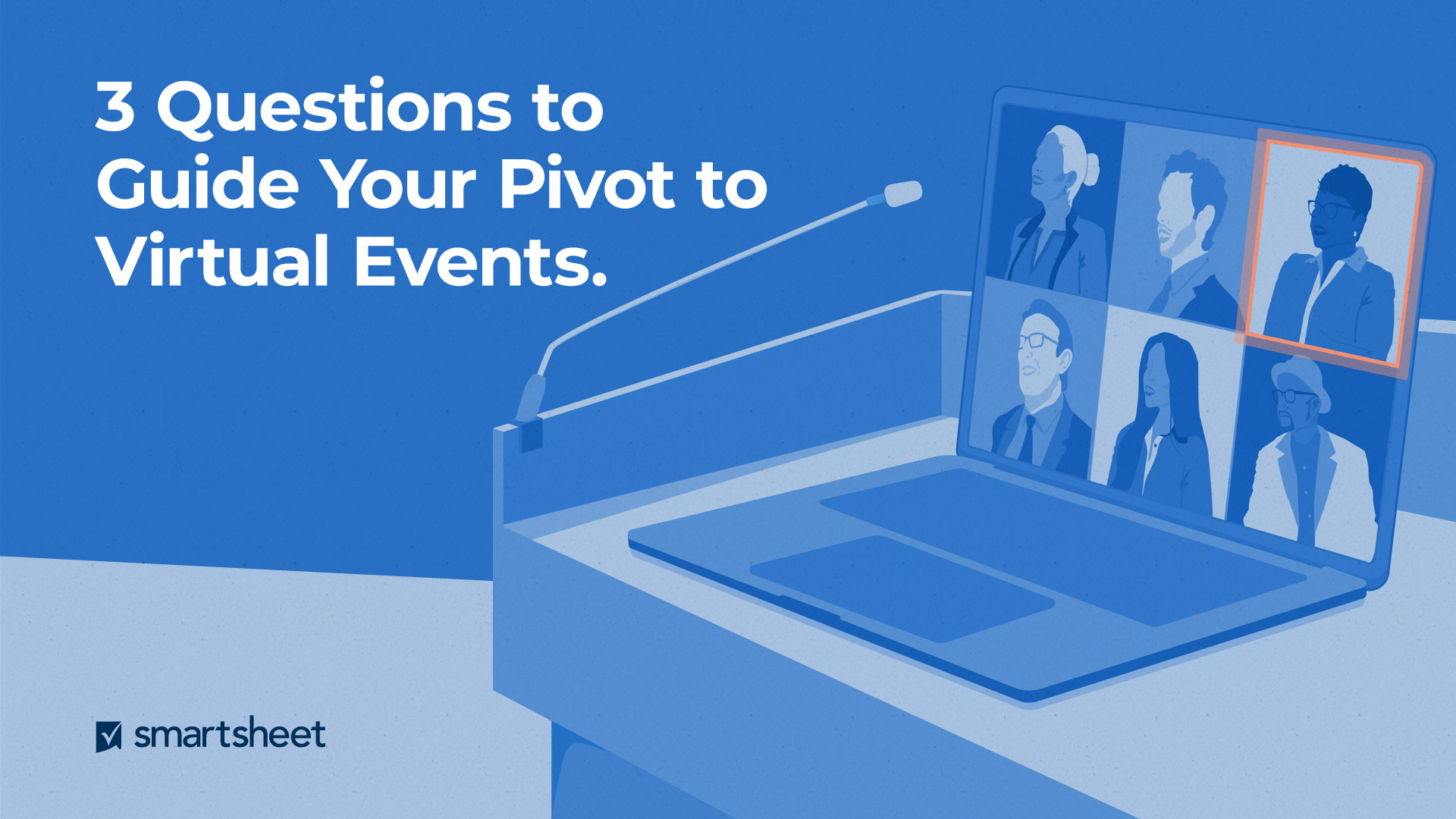Editor’s note: In this article, Christa Matson, Senior Director of Corporate Events at Smartsheet, shares her expertise to help marketers plan and organize first-rate events, whether in-person or virtual, using the Smartsheet platform.
Event management, in my opinion, is very similar to project management; the key to success is keeping the management side light and simple. This is especially true when we organize and plan for our annual Smartsheet ENGAGE customer conference. This event brings together the global Smartsheet community to learn and share best practices across multiple roles and industries.
We’ve held ENGAGE in Seattle since 2017, doubling in size each year. When we made the decision to host ENGAGE 2020 as a virtual event due to the global pandemic, we were able to make a quick and successful pivot by using the Smartsheet platform to plan, track, and automate all the moving parts.
Prior to Smartsheet, I managed events using a mix of static spreadsheets. While that got the job done, it was woefully inefficient. I’ve saved so much time using Smartsheet to manage all the little details that go into producing an event. For example, we created a shared workspace and Smartsheet dashboard to track key deliverables and deadlines with underlying sheets to manage the event budget, sponsorship deliverables, content creation, demand generation plan, signage and collateral, registration tracking, and more.
We even built the conference agenda in Smartsheet using card view to ensure we weren’t double-booking our presenters. Our core planning team is always on the same page, with shared visibility and accountability of what’s on track or at risk. What’s proved especially helpful is the ability for our event team to share progress notes and add documents—all in one centralized location—by attaching them to our tracking sheet.
And the option to track deliverables using different workflow views—grid view, Gantt view, card view, or calendar view—makes it super easy to spot where we are behind (or ahead!) of schedule. Whether you’re new to event marketing or a seasoned pro, I think you’ll find these seven tips and tricks helpful for using Smartsheet to plan your next event.
1. Provide visibility, transparency across your company
We created a Smartsheet dashboard—without any support from IT—to share top-level events metrics and updates with our entire organization.
With the dashboard in place, we didn’t need to answer one-off questions over and over again. Since anyone can go to the event dashboard and find the real-time metrics we provide, we met questions such as “How many registrations do we have versus the goal?” or “Where are we with our sponsorship sales?” with an easy answer: Check out our ENGAGE dashboard!
If you’re excited to build your own dashboard, Smartsheet Business and Enterprise plan customers can download the free Event Registration and Tracking template set. It includes a sheet with an auto-calculating workback schedule, a dashboard template, and an event planning sheet to help get you started.
2. Transform your planning meetings
It’s wise to avoid drawn-out email threads and manage your meetings directly in a sheet. We use a single sheet to manage our planning meetings so everything is in one place—from the agenda to the presentation deck, including additional supporting materials and action items.
While sheets are super versatile, we’ve been able to move even faster by using the Smartsheet Integrations for Microsoft Teams and Slack,. We can receive automated notifications on desktop or mobile in our Slack channel that connects cross-functional teams to coordinate publishing web pages, sharing design changes, or triaging any hiccups we encounter along the way.
3. Manage third-party vendors and information cohesively
We are closely aligned with our vendors and find it helpful when they are working off of the same information as our internal team. But how do you ensure that external stakeholders are shared to the information that is relevant to them?
We use our premium app, Dynamic View, to filter information in a sheet based on the individual viewing the screen. By only displaying critical information to the right stakeholders, we keep confidential information secure, and reduce the burden of oversharing information—all while not duplicating any work. While you can invite vendors to work with you, there might be other systems that keep data outside of Smartsheet, such as your registration platform.
In order to get key information into Smartsheet and share it out to other members of the team, we use Data Shuttle. This premium app can transfer data from another source to Smartsheet, which eliminates hours spent sorting, filtering, and copying and pasting information between business systems.
4. Give speakers a best-in-class experience
One of the primary reasons our customers attend ENGAGE (and most conferences in general) is to connect with and learn from their peers. We use Smartsheet to coordinate dozens of internal and external speakers across the event agenda, and ultimately want to ensure all of our conference speakers are well prepared before and during the event.
We collect each speaker’s contact information, bio, and headshot via a quick Smartsheet form. We also use a shared dashboard and automated alerts to communicate key updates, deadlines, and deliverables, as well as to schedule rehearsal times and collect final presentation decks and materials. Many of our customers speak at various industry conferences each year and have raved about how easy it is to use Smartsheet to manage this process.
5. Manage your demand generation plan
Most events include a mix of paid, earned, and owned channels to help drive registration. For ENGAGE, we have over 100 individual tactics to manage across multiple platforms.
We use Smartsheet to manage all of these workflows and details, including due dates, task owners, links to copy docs, and attaching creative files and thumbnail images directly to the task’s row.
Our graphic designers often need creative files that are at the row, but prefer to work directly in Adobe Photoshop, Illustrator, or InDesign. With our Integration for Adobe Creative Cloud, they can collaborate with us on assets directly from their preferred creative tool. With Smartsheet proofing, designers can upload and review files, add comments, track versions, and log approval decisions.
Then, business owners can easily provide feedback on images and PDFs uploaded to Smartsheet. Anyone with permissions in the sheet can also upload files directly to a row or via Dropbox, Google Drive, Microsoft OneDrive, and other popular cloud-based file storage platforms.
6. Raise the bar for onsite and virtual operational excellence
One of the reasons I love managing events is experiencing all the planning and details come to life. When it comes to our onsite production schedule, I use Smartsheet as a literal checklist for each area of the event.
For example, I build out an inventory of everything that’s needed at the registration desk and then double-check during setup that everything is at the event and accounted for. That said, anyone who’s managed an event, large or small, knows that everything doesn’t always go to plan.
Even when an event is completely virtual, as ENGAGE 2020 was, many of these checklists still apply. Our team created a Run-of-Show document in Smartsheet to ensure that each of us were on the same page (down to the minute), even if we couldn’t be together in person.
7. Gather feedback, evaluate, and improve
Gathering feedback from your attendees is such a valuable way to debrief and learn. We use Smartsheet forms to quickly create multiple surveys—one version for our customer attendees, another for speakers, another for sponsors, and an internal survey of our employees.
This allows us to gauge if we met the mark or fell short on key areas of the event, how we performed against the previous year, and how we can improve the experience next time around.
Combining and reviewing all of the survey responses helps us make data-driven decisions on what to stop, start, continue, or improve for the upcoming year. We can feed these results into our standard processes and automate to make future events even more engaging for our customers.
If you want to learn more about Smartsheet ENGAGE, check out the highlights from our 2020 virtual event.
